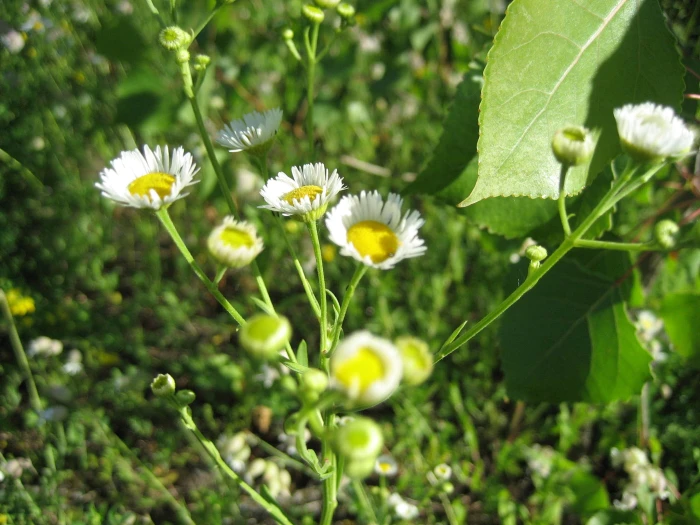Prairie Fleabane
(Erigeron strigosus)
Prairie Fleabane (Erigeron strigosus)
/
/

rboles
CC BY 4.0
Image By:
rboles
Recorded By:
Copyright:
CC BY 4.0
Copyright Notice:
Photo by: rboles | License Type: CC BY 4.0 | License URL: http://creativecommons.org/licenses/by/4.0/ | Rights Holder: rboles | Publisher: iNaturalist | Date Created: 2019-06-28T08:05:45-07:00 |






















Estimated Native Range
Climate Requirements for Brambleton, Virginia
| This Plant | Your Site | Plant Suitability for Your Location | ||
|---|---|---|---|---|
| • Precipitation | 8" - 123" | 40" | Aquatic | Aquatic |
| • High Temp. | 60°F - 99°F | 87°F | Your summer temperatures are normal for this plant. | Excellent |
| • Low Temp. | -30°F - 59°F | 23°F | Your winter temperatures are normal for this plant | Excellent |
This plant should grow very well at your location without additional irrigation.
Summary
Erigeron strigosus, commonly known as Prairie Fleabane, is an annual or biennial herb native to prairies, open woodlands, and meadows across eastern and central North America. It has also naturalized in parts of western North America, Europe, and China. This plant typically grows up to 31 inches tall and features hairy, petioled leaves. During its flowering season, which spans late spring to early summer, Prairie Fleabane produces numerous small flower heads. Each head has a central cluster of yellow disc florets encircled by white, pink, or blue ray florets, which are modestly showy and attract a variety of pollinators.
Prairie Fleabane is valued for its adaptability and ease of maintenance, making it suitable for wildflower gardens, meadows, and naturalized areas. It thrives in full sun to part shade and prefers well-drained soils, though it can tolerate a range of soil conditions. This species is drought-tolerant once established and can be used for erosion control. Gardeners should be cautious, as Erigeron strigosus can self-seed prolifically and become weedy or potentially invasive outside its native range. It is advisable to deadhead spent flowers to prevent unwanted spread.CC BY-SA 4.0
Prairie Fleabane is valued for its adaptability and ease of maintenance, making it suitable for wildflower gardens, meadows, and naturalized areas. It thrives in full sun to part shade and prefers well-drained soils, though it can tolerate a range of soil conditions. This species is drought-tolerant once established and can be used for erosion control. Gardeners should be cautious, as Erigeron strigosus can self-seed prolifically and become weedy or potentially invasive outside its native range. It is advisable to deadhead spent flowers to prevent unwanted spread.CC BY-SA 4.0
Plant Description
- Plant Type: Herb
- Height: 1-3 feet
- Width: 1-2 feet
- Growth Rate: Moderate
- Flower Color: White, Pink
- Flowering Season: Spring, Summer, Fall
- Leaf Retention: Deciduous
Growth Requirements
- Sun: Full Sun, Part Shade
- Water: Medium
- Drainage: Fast, Medium, Slow
Common Uses
Bird Garden, Butterfly Garden, Deer Resistant, Drought Tolerant, Erosion Control, Groundcover, Low Maintenance, Street Planting
Natural Habitat
Native to prairies, open woodlands, and meadows across eastern and central North America
Other Names
Common Names: Prairie Fleabane, Rough Fleabane, Daisy Fleabane, Whitetop
Scientific Names: Erigeron strigosus, Diplemium strigosum, Doronicum ramosum, Erigeron ambiguus, Erigeron annuus subsp. strigosus, Erigeron annuus var. ramosus, Erigeron australis, Erigeron australis, Erigeron beyrichii
GBIF Accepted Name: Erigeron strigosus